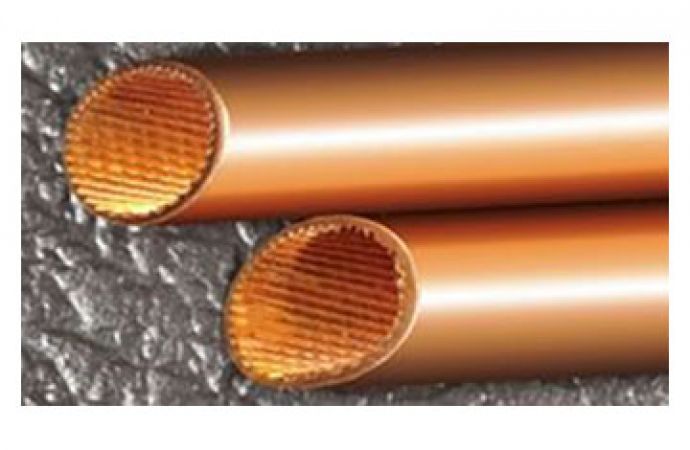CoilDesigner’s latest upgrades incorporate small-diameter MicroGroove tubing, which supports CO2 and hydrocarbon systems.

Over the past 15 years, the University of Maryland’s Center for Environmental Energy Engineering (CEEE) has been developing heat exchanger design software called CoilDesigner that enables HVAC&R system designers and heat exchanger engineers to design and simulate heat exchangers that best meet their requirements. The software predicts vital metrics like heat-transfer coefficients and pressure drops for refrigerants and air.
Since 2009, Optimized Thermal Systems, Inc. (OTS), Beltsville, Md., has held an exclusive license for the software, making custom versions and providing commercial licenses to the industry.
“CoilDesigner enables you to design a wide variety of heat exchangers,” said Cara Martin, chief operating officer of OTS. “It’s not limited by real-world manufacturing constraints or by refrigeration type. Some designs can’t be manufactured today, but in three to five years you could manufacture them. It’s a tool to push the boundaries and come up with next generation products.”
CoilDesigner has been used to accurately design and simulate heat exchangers using natural refrigerants like CO2 and propane. “We were able to design and build those heat exchangers, test them and find good agreement with the results predicted by the software,” said Dennis Nasuta, engineering manager of simulation for OTS.
For example, OTS and others have used CoilDesigner to design heat exchangers using hydrocarbons (such as isobutane) or CO2 for vending machines and cold beverage cases. Worldwide, more than 60 companies use CoilDesigner, including HVAC&R system and heat exchanger manufacturers; some of those companies also sponsor R&D for the software at the University of Maryland.
Accommodating MicroGroove Tubes
In March of this year, CoilDesigner took several steps forward as OTS, in concert with the International Copper Association (ICA), updated the software to include design data (known as correlations, which reflect the results of lab tests) for refrigerant-conveying copper tubing known as MicroGroove with diameters ranging between 3mm and 5 mm. The data includes how refrigerants, including natural refrigerants, behave in these tubes in terms of heat transfer and pressure drop. (In addition to MicroGroove tubes, the software also designs microchannel and tube-in-tube configurations.)
MicroGroove tubes also feature tiny grooves (also called microfins) of various designs in the interior surface of the tube, which can increase heat transfer by more than 20%, according to recent collaborative studies by OTS, ICA and Burr Oak Tool, Inc.
The tiny diameter and inner grooves of MicroGroove tubing offer several benefits to heat exchangers, including less weight, less refrigerant and lower material costs, as well as better heat transfer because of greater surface-to-volume ratio.
The MicroGroove tubes also work well with natural refrigerant applications. For example, the tubing is able to accommodate higher pressures without greater wall thickness, making it well suited for carbon dioxide. In particular, MicroGroove small-diameter tubes have been used in the manufacture of high-pressure gas coolers for CO2 transcritical applications. In regard to propane, MicroGroove tubing enables heat exchangers to minimize the refrigerant charge, per federal requirements.
“One of the big challenges with flammable natural refrigerants, like propane, is the charge,” said Martin. By incorporating MicroGroove tubing, [CoilDesigner] “is able to make the system more compact and more efficient in terms of heat transfer performance, and consequently reduce the refrigerant charge to meet EPA requirements for various applications. Natural refrigerants then become a lot more feasible.”
Work over the summer has extended the initial effort in March to include more comprehensive design data for small diameter Microgroove heat exchangers. Early next year, OTS will update CoilDesigner to enable prediction of both the refrigerant and air-side performance of a heat exchanger with small diameter Microgroove tubes. “At that point, engineers will have all the capability they need to fully design and vet small diameter MicroGroove tubes in heat exchangers,” Martin said.
While CoilDesigner can be and has been used to design heat exchangers that use propane, the software still lacks experimental data on the performance of propane specifically for small diameter Microgroove tubes, noted Nasuta. “We need in the future to validate that experimentally.”
Apart from its work with CoilDesigner, OTS is designing and building a CO2/geothermal air conditioner that will be part of a net-zero-energy demonstration house developed by the National Institute of Standards & Technology (NIST). The air conditioner will use ground-sourced water in concert with CO2 as a refrigerant, along with 5 mm copper tubing in the evaporator’s heat exchanger. “We’re using CoilDesigner to design the heat exchanger and we’re working with vendors to finalize the design,” said Martin.
OTS also conducts heat exchanger and system-level testing for new HVAC&R applications and provides custom design and optimization to address energy and environmental challenges, including evaluating the potential for alternative refrigerants.
MORE INFORMATION
Related stories


